Medicinal Plants & Trees:
The Institute has procured 11 medicinal plants that comprise Calendula, Ashwagandha, Tulsi, Basil, Costus, Rue, Peppermint, Aloe vera, Kalanchoe pinnata, Lemongrass & Lavender. These plants are maintained and valued for their important medicinal properties that range from treating common wounds to high blood pressure. Additionally, the institute also nurtures around 10-15 trees inside the campus, and all of these plants and trees have QR Codes attached to them. On scanning these QR codes, their respective details and properties are displayed.
Organic Waste Converter:
“Use it up, wear it out, make it do or do without.”
Sustainable waste management is a practice that should be adopted by everyone, especially considering the current climate concerns of the planet. In a conscious step towards preserving and safeguarding the environment, N. L. Dalmia Institute has installed an Organic Waste Converter (OWC) on its campus. The OWC enables the conversion of all the wet waste generated by the Institute into compost by means of a natural process which is used for the purpose of landscaping in and around the Institute.
Features:
-
Waste conversion capacity of 50kgs per day
-
No artificial process involved
-
Provides compost for all plants and trees under the care of the Institute
-
Environment friendly
Solar Energy:
A 10-kw roof-top solar photo voltaic (pv) system has been installed on the terrace of the building. The same was installed in February 2017 and is working ever since.
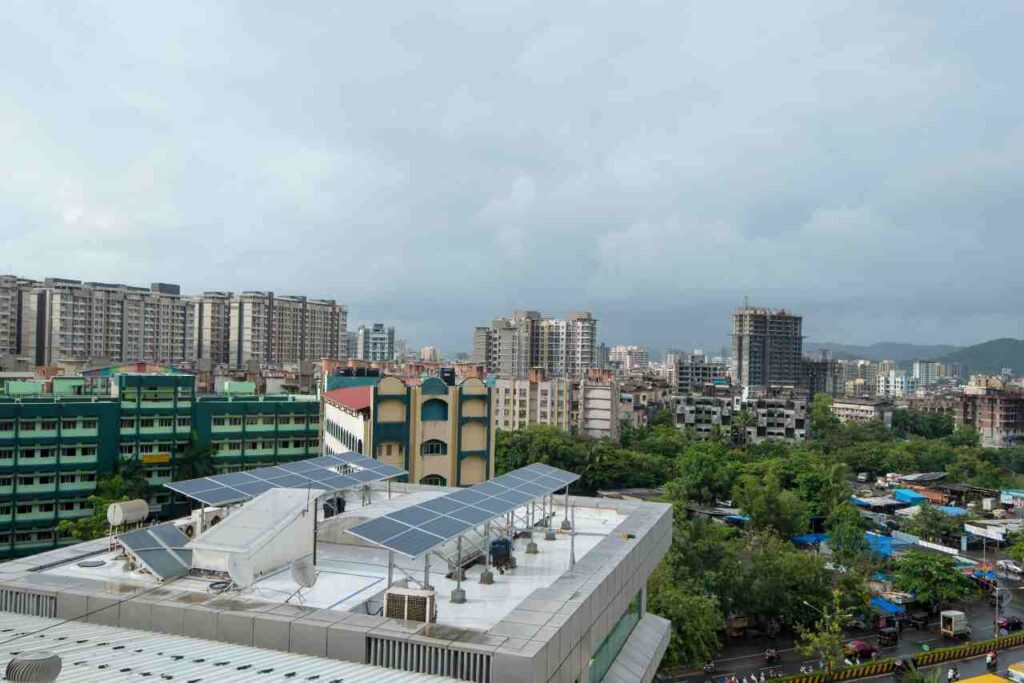
Wheeling to the grid:
The power generated through this is supplied to the electricity grid of the service provider (Adani). The credit of the units generated appears in the periodical invoice that The Institute receives from time-to-time. Therefore, The Institute pays energy charges only for the net units consumed.
Sensor based energy conservation:
Motion sensors are installed in wash rooms so that when not in use, the lights switch off. This saves electricity. We are adding these devices to the locations in Campus where it is less frequented.
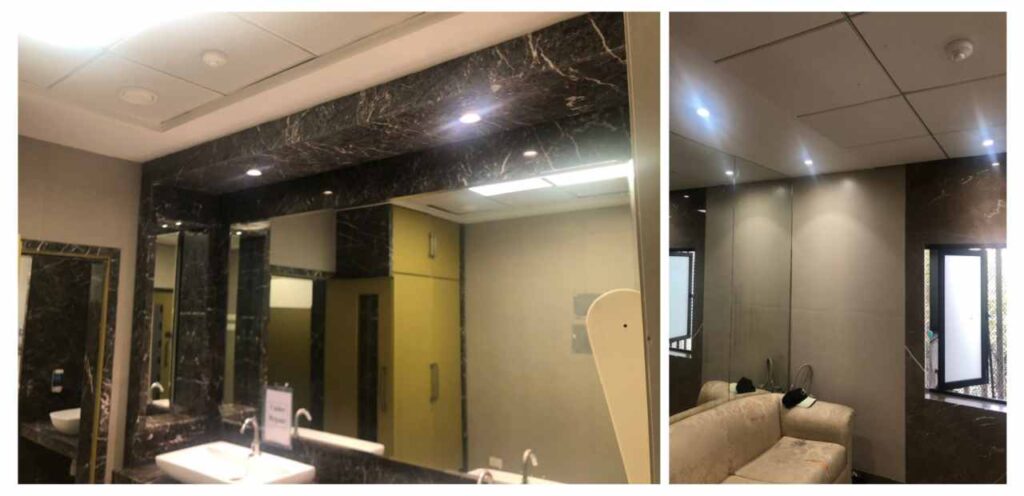
Use of LED bulbs/ Power Efficient Equipment:
Throughout the campus, led lights have been installed for better power efficiency. We whole-hearted support the initiatives taken by our Honourable Prime Minister.
Rain Water Harvesting:
A rain water harvesting system has been installed within the campus. Most of the water stored is being used for watering plants within the campus as well as on the island (divider on the road) outside. The Institute has adopted the island from the municipal authorities and are maintaining the same.
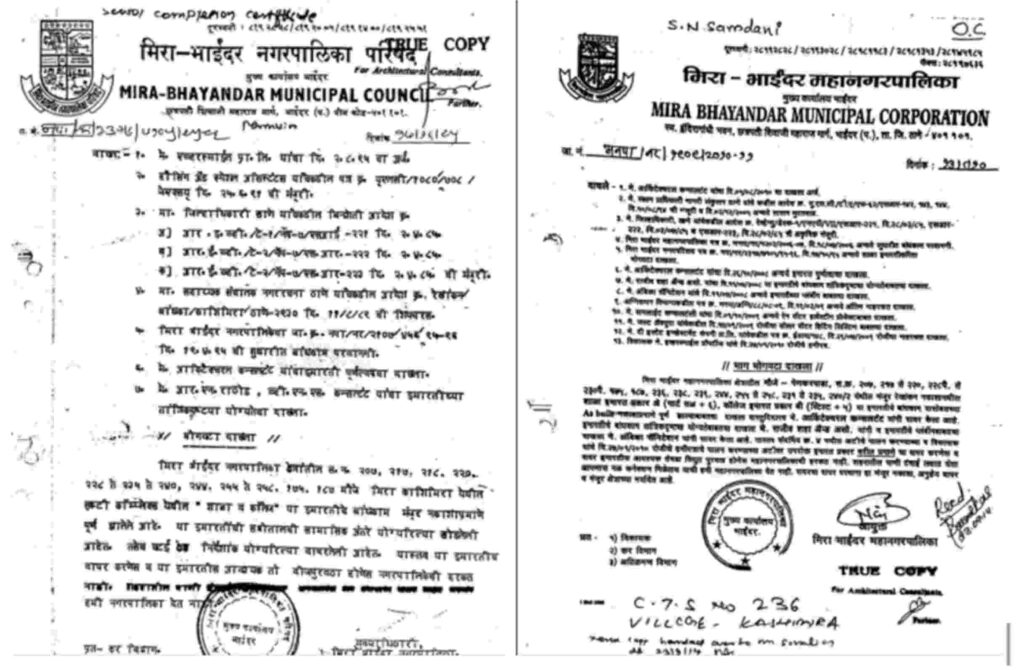
Construction of Tanks and Bunds:
Various tanks including underground fire tank, potable water tank (supply from the municipality) and overhead tanks for distribution of water are made to take care of the consumption in campus.
Waste Water Recycling:
The recycled water from the rain water tank is used for watering the plants. Some of the water collected is flushed into the soil to maintain the water table.
Solid Waste Management:
In solid-waste management, the collecting, treating, and disposing of paper and hard plastic solid material is done separately as it can be recycled for further use, if at all. Improper disposal of municipal solid waste can create unsanitary conditions, and these conditions in turn can lead to pollution of the environment and to outbreaks of vector-borne disease—that is, diseases spread by rodents and insects. The tasks of solid-waste management present complex technical challenges. They also pose a wide variety of administrative, economic, and social problems that must be managed and solved.
To a great extent the Institute achieves the above by separating the waste at the generation stage itself. The Institute has separate bins not only for wet and dry (in the canteen) but also for paper and plastic waste (rest of the campus). The wet waste collected in the canteen is then processed in the compost machine (100% natural process) to generate manure that can be used in urban farming and landscaping.
For liquid waste management, The Institute has installed a rain water harvesting system that recycles uncontaminated water for domestic and irrigation needs. Rainwater harvesting (rwh) is a simple method by which rainfall is collected for future usage. The collected rainwater may be stored, utilised in different ways or directly used for recharge purposes. With depleting groundwater levels and fluctuating climate conditions, rainwater harvesting can go a long way to help mitigate these effects. Capturing the rainwater can help recharge local aquifers, reduce urban flooding and most importantly ensure water availability in water-scarce zones.
Biomedical waste management:
When the covid-19 pandemic hit us, the Institute has installed red coloured waste paper baskets in various locations in the campus for collection of used masks and other one-time use materials such as gloves. These are disposed off separately to the local municipality.
Disposal of e-waste:
Disposal of e-waste is an emerging global environmental and public health issue, as this waste has become the most rapidly growing segment of the formal municipal waste stream in the world. E-waste or waste electrical and electronic equipment are loosely discarded, surplus, obsolete, broken, electrical or electronic devices. The Institute disposes off computers and its waste periodically to an e-waste recycling company that provides us with a certificate stating that the waste has been appropriately taken care of. This ever-increasing waste is very complex in nature and is also a rich source of metals such as gold, silver, and copper, which can be recovered and brought back into the production cycle.
The campus does not generate any hazardous or radioactive waste.
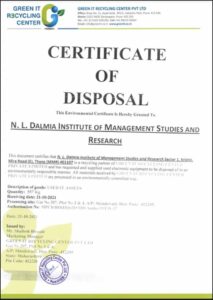
Maintenance of Water Bodies and Distribution System in the Campus:
Underground water tanks have been made for the use in case of fire (dedicated tank) and for storage of potable water (supplied by the municipal authorities). The water is pumped from the underground water tanks to the overhead tanks for use in the campus.
Restricted Entry of Automobiles:
The Institute discourages the use of automobiles and urges the team members to use public transport to commute to and from campus. Parking facilities are highly restricted. Only those team members who cannot connect with the public transport easily are given permits to park within the campus.
Use of Bicycles / Battery powered vehicles:
The Institute is in the process of installing charging stations for battery powered vehicles. Some children do come to campus on bicycles. These are parked just outside the campus.
Pedestrian Friendly Pathways:
Within and outside the campus walking is quite simple. The municipality has done a very good job of making a good sidewalk / footpath. Within the campus, the land is levelled and tiled for better movement. Accessibility by the physically challenged is also made simple. Wheelchair is available at the reception. Evacuation chair is available on campus. Staircases are fitted with stairlifts for the people who require support.
Ban on use of Plastic:
The Institute follows the municipality’s policy on use and disposal of plastic. NLDIMSR has reduced the use of one-time use of plastic. The Institute has printed paper and jute bags for carrying materials.
Landscaping with Trees and Plants:
The campus has not only landscaped the periphery of the compound but also placed (indoor) plants on every floor. The periphery has short and tall trees as well as shrubs, creepers, etc.
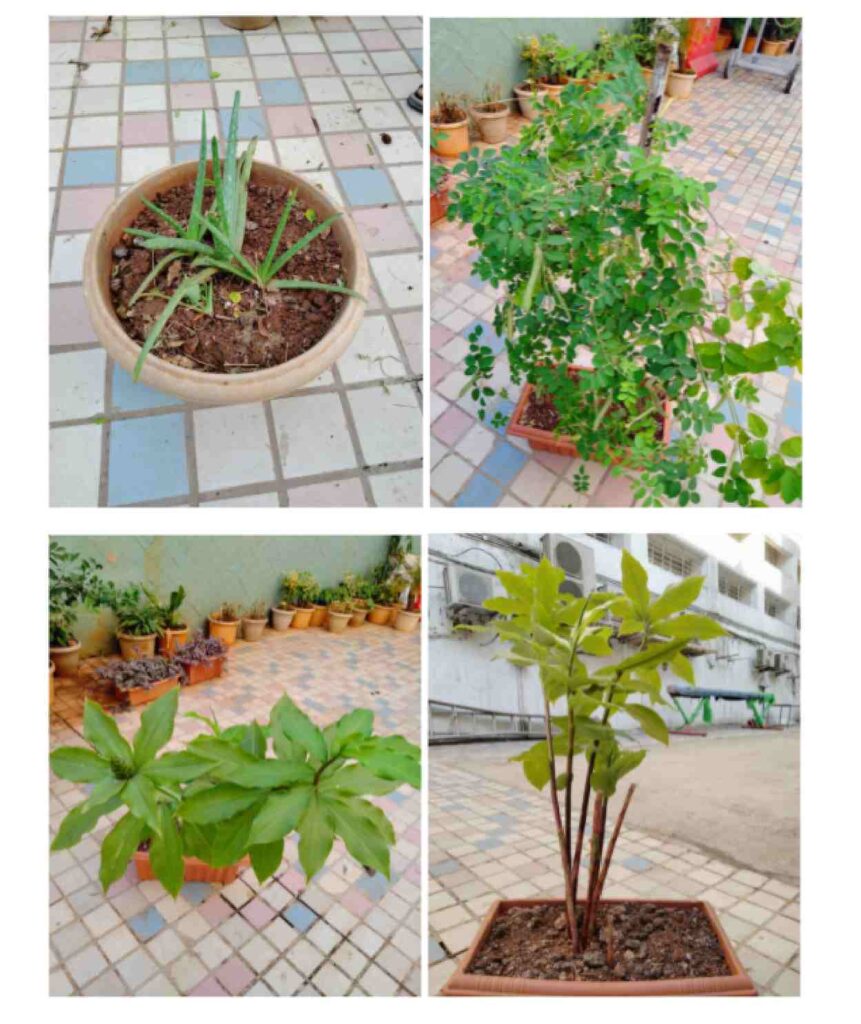
Built Environment with Ramps/Lifts for easy access to Classrooms:
All floors and classrooms are accessible using the elevator and/or stairlift. The differently abled persons can access these elevators behind the main reception. They can wheel-in on their wheelchairs and enter the elevators in their chairs and continue to the classroom. Certain classrooms that are at a different level can be accessed using the stairlift.
Disabled-friendly washrooms:
All washrooms have a separate dedicated washing closet (WC) for the differently abled. The unit can be accessed on a wheelchair, if required.
Signage including tactile path, lights, display boards and signposts assistive technology and facilities for persons with disabilities (Divyangjan) accessible website, screen-reading software, mechanized equipment
Way finding signage have been put up throughout the campus. The Institute is in the process of putting a design element on it and making it more attractive and pleasing to the eye. A consultant is making plans for the same.